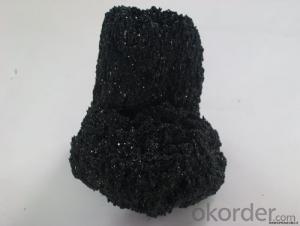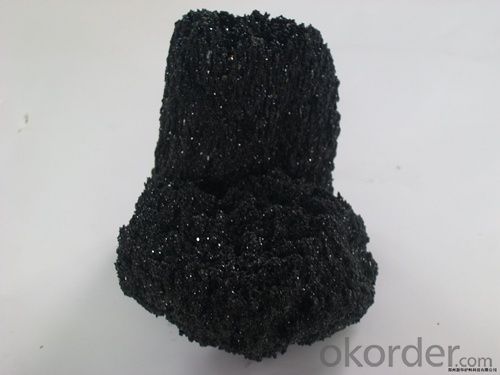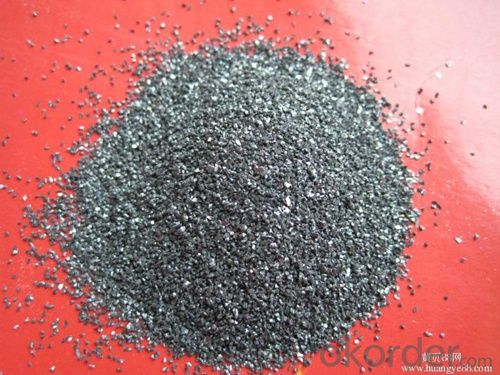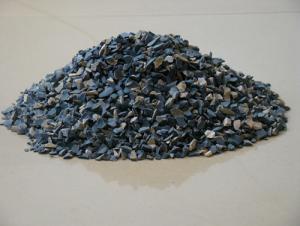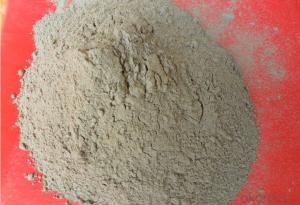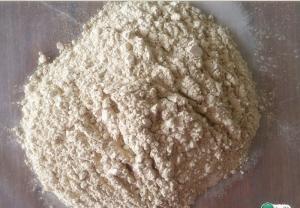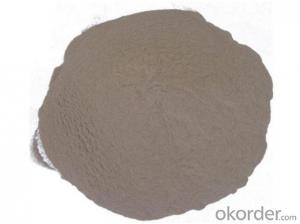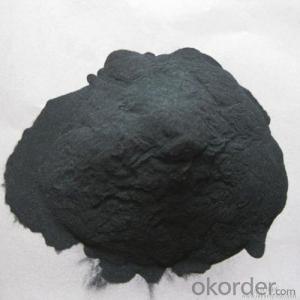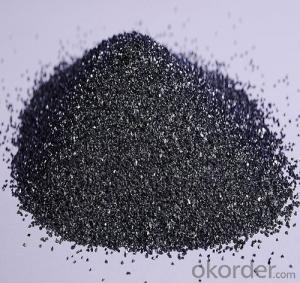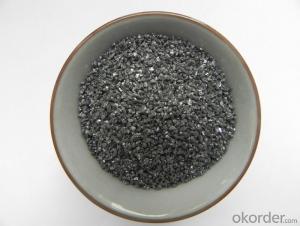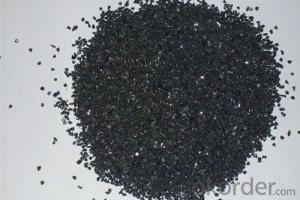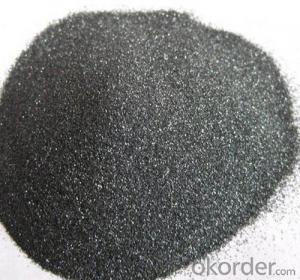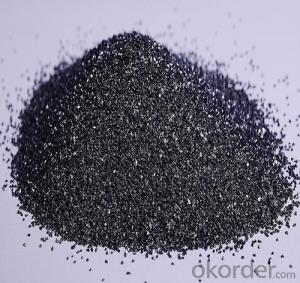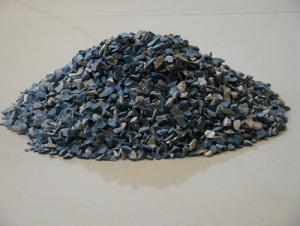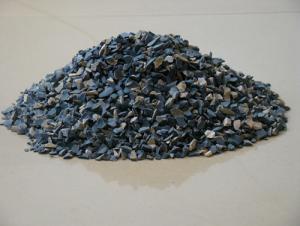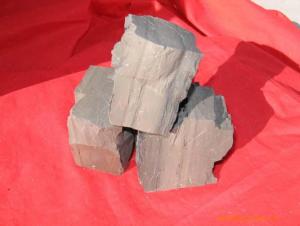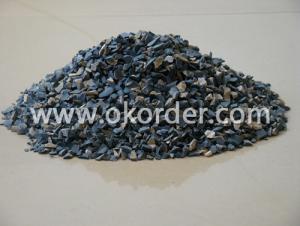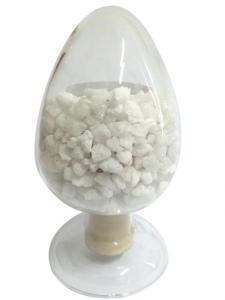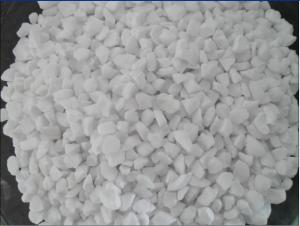High-Tech Refractory Raw Materials:SIC Silicon Carbide Slab
- Loading Port:
- China main port
- Payment Terms:
- TT OR LC
- Min Order Qty:
- 25 m.t.
- Supply Capability:
- 2000 m.t./month
OKorder Service Pledge
OKorder Financial Service
You Might Also Like
Quick Details
| Place of Origin: | Shandong, China (Mainland) | Shape: | Pipe | Material: | Silicon Carbide (SiC) |
| SiO2 Content (%): | 10% | Al2O3 Content (%): | None | MgO Content (%): | None |
| CaO Content (%): | None | Refractoriness (Degree): | 1770°< Refractoriness< 2000° | CrO Content (%): | none |
| SiC Content (%): | 85% min | Model Number: | SIC | Brand Name: | CNBM |
| Fe2O3: | 1.5% max | bulk density: | 2.6 | wearing loss cm2: | 3.1 |
| Mohs hardness: | 8 | style: | high-tech refractory slab SiC silicon carbide | usage: | high-tech refractory slab SiC silicon carbide |
Packaging & Delivery
| Packaging Details: | Packed into pallets with plastic film |
| Delivery Detail: | 35 working days after paid |
high-tech refractory slab SiC silicon carbide
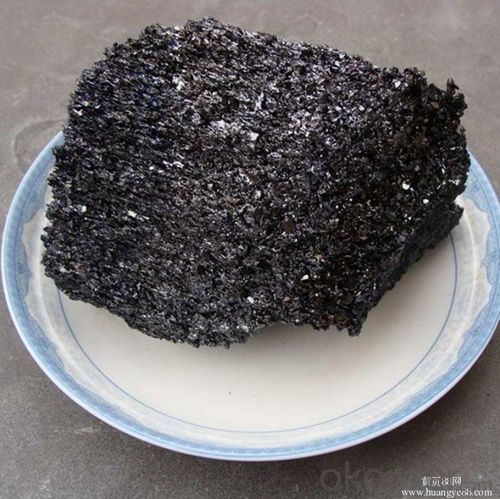
| Item | Specification | Test standards |
| Bulk density (g/cm3) | 2.6 | GB/T2997-2000 |
| Cold crushing strength (Mpa) | 100 | GB/T5072.2-2004 |
| Wear resistance (cm2) | 3.1 | GB/T18301-2001 |
| Moh hardness | 8 | |
| SiC (%), Min | 85 | GB/T6900-2006 |
| Fe2O3 (%), Max | 1.5 | GB/T6900-2006 |
Features of high-tech refractory slab SiC silicon carbide
1. resistance to deformation at high temperature,
2. thermal shock resistance, wear resistance, corrosion resistance.
3. anti-oxidation, anti- erosion.
Usage of high-tech refractory slab SiC silicon carbide
electricity and steel slag trench,
coal chemical and mining transport pipeline.
- Q: Does the external wall thermal insulation materials level b1 need the fire barrier zone?
- Residential buildings should meet the following requirements: 1, The height of building is greater than or equal to 100m, the combustion performance of thermal insulation material should be level A. 2, The height of building is greater than or equal to 60m but less than 100m, the combustion performance of thermal insulation material should not be less than the level B2. When using the level B2 thermal insulation material, each layer should set a horizontal fire barrier zone. 3,The height of building is be equal or greater than 24m but less than 60m, the combustion performance of thermal insulation material should not be less than the level B2. When using level B2 thermal insulation material, each two-layer should set a horizontal fire barrier zone. 4, The height of building is less than 24m, the combustion performance of thermal insulation material should not be less than the level B2. Besides, when using level B2 thermal insulation material, each three-layer should set a horizontal fire barrier zone. According to this understanding, it can not be set.
- Q: How can refractory material of the electric furnace be used for longer.
- Key: 1, consider the furnace size; As furnace volume differs, pressure of liquid iron (steel) on the crucible wall lining will not the same; 2, consider melting steel type: If different steels are melt, the erosion of steel liquid on the lining refractory is not the same; 3, give full consideration to the lining of the grain size distribution of the refractory material, otherwise, it will cause of refractory matrix size segregation. 4, regardless of the kind of refractory materials, take full consideration into the mineral phrase of refractory material, high temperature and other equal factors. 2011 - 01 - 05 Guangyi mineral
- Q: Where is the sizing nozzle for refractories? Just enter the line, master into!
- Hua Heng refractories in the industry reputation is good, especially in the Southern small steel sales are among the best!
- Q: What's the classification of refractory material?
- Magnesium aluminum is complex and mainly seeing what classification standard is like according to the appearance shape can be divided into two categories, setting and not setting according to the acid alkali can be divided into acidic, magnesia, high aluminum, ramming expected, spinel, spray coating, plastic, just the quality of the jade, daub material according to the chemical composition is divided into, such as clay, neutral and alkaline according to the operation mode can be divided into different castable, magnesium, calcium, magnesium chrome
- Q: What are the main components of refractory cement?
- SiO powder is often used. Ultra-fine powder refers to less than 1 / zm particles which are made by hydrolysis of ethyl silicate or made from recycled dust in the smelting process of ferro-silicon alloy. Non-cement castable refractory are castable refractory material which contains no cement instead it relies on the coagulation and combination by adding ultra-fine powder or sol (see refractory castable), and it is an amorphous material with high activity. Silica sol is made through Ion-exchange of sodium silicate after Na ions are removed. The easiest method is to prepare by reaction of aluminum metal with hydrochloric acid or alchlor. It is a thermodynamically unstable system which has certain requirements for ultra-fine powder and sol. It is different from non-cement refractory castable, Cr2zrOz and etc. It has low impurity content, and can bond with itself, so it has good binding strength. Ultrafine powder used in non-cement castables are SiO2, Al2O3, Cr2zrOz, etc. Such recycled SiO2 powder has an average particle diameter of 0.5 pm, therefore when adding the gelling agent (electrolyte), it can coagulate and give the products some bonding strength. Non-cement castable refractory is made up of refractory aggregate and powder and it is round. Since the use of superfine powder or sol as binder. The size of sol particles are of 0.1 ~ 1 m. Non-cement refractory castable takes oxide or synthetic compound ultra-fine powder or oxide sol-gel which is similar to the chemical composition of material in tungsten castable. There are several ways to prepare alumina sol. The sol used are mainly alumina oxide and silica sol. The surface area is large, and it helps to improve high-temperature structural strength. Non-cement castable refractories rely on oxide ultra-fine powder or sol to coagulate and combinate. It is a refractory castable (also known as chemical bonding castable) which uses chemical binder instead of cement for combination.
- Q: Who knows about the fire endurance of grade C fire doors?
- The fire endurance of grade C fire doors is no less than 0.5 hours. As the key role of family fireproofing, fire doors is particularly important. It can be classified according to the fire endurance and thermal insulation performance: The fire endurance of grade A fire doors is not less than 1.5 hours; that of grade B fire doors is not less than 1.0 hours; and that of grade C fire doors is not less than 0.5 hours. We can choose in accordance with different needs, but commonly used fire doors are grade A and B fire doors now.
- Q: how to classify Insulating Refractory ?
- General materials have test reports, where fire rating is labled.
- Q: What are the additives and recipes of refractory?
- Water reducing agent is to evidently reduce mixing water content while keep the slamp value of refractory castable almost invariant, also known as fluid loss agent. Water reducing agent itself cannot have chemical reaction with material component or compose new chemical compound, but it just seemingly has physical and chemical reactions. The binding agent of refractory castable is calcium aluminate cement combined with clay and oxide micro powder. In commonly used water reducing agents, the inorganic includes sodium pyrophosphate (Na4P2O7), sodium tripolyphosphate (Na5P3O10), sodium hexametaphosphate [(NaPO3) 6], super sodium polyphosphate (Na2P4O11), sodium silicate (Na2O · nSiO2 · mH2O), and so on; the organic includes lignosulphonate water reducer (sodium lignosulphonate, calcium lignosulphonate); naphthalene water reducer (naphthalene sulfonate or naphthalene homologues with formaldehyde condensate): water soluble resin water reducing agent (sulfonated melamine formaldehyde resin, abbreviated as composite of melamine water reducer).
- Q: I wanna ask about the thermal insulation material fire resistant level?
- The inorganic glass wool, rock wool and foam glass. Organic: The best is the phenolic foam, phenolic foam composite cement layer is level A.
- Q: What is refractory?
- Refractory materials are widely used in metallurgy, machinery manufacturing, chemical industry, petroleum, power and other industrial fields. It is an inorganic nonmetallic material mostly used in metallurgical industry with the minimum refractoriness of 1580 ℃, able to resist high temperature without softening (annealing). It accounts for 50% to 60% in total output. Refractoriness refers to refractory's ability to resist fire.
Send your message to us
High-Tech Refractory Raw Materials:SIC Silicon Carbide Slab
- Loading Port:
- China main port
- Payment Terms:
- TT OR LC
- Min Order Qty:
- 25 m.t.
- Supply Capability:
- 2000 m.t./month
OKorder Service Pledge
OKorder Financial Service
Similar products
Hot products
Hot Searches
Related keywords
